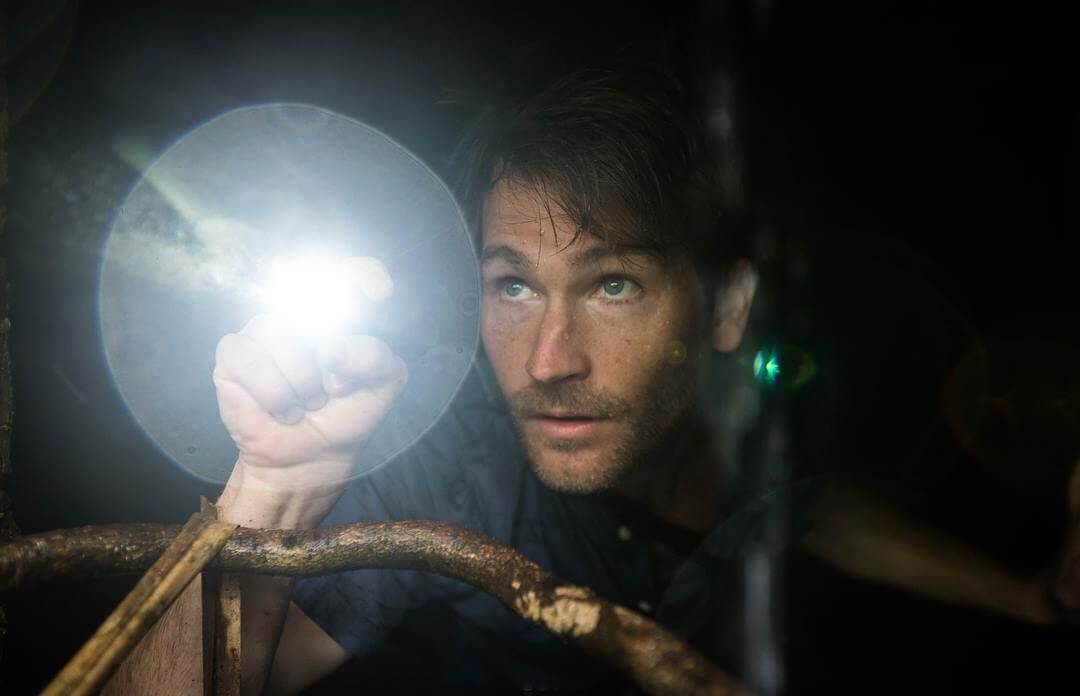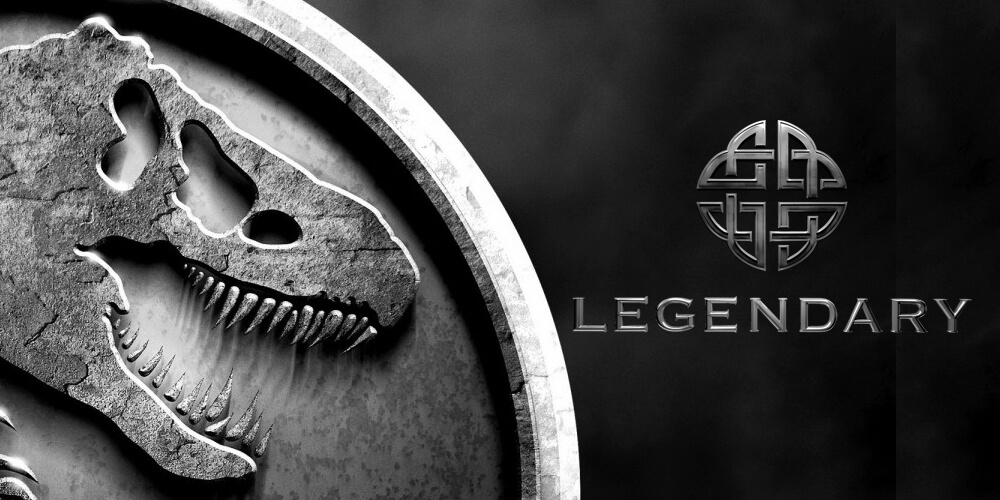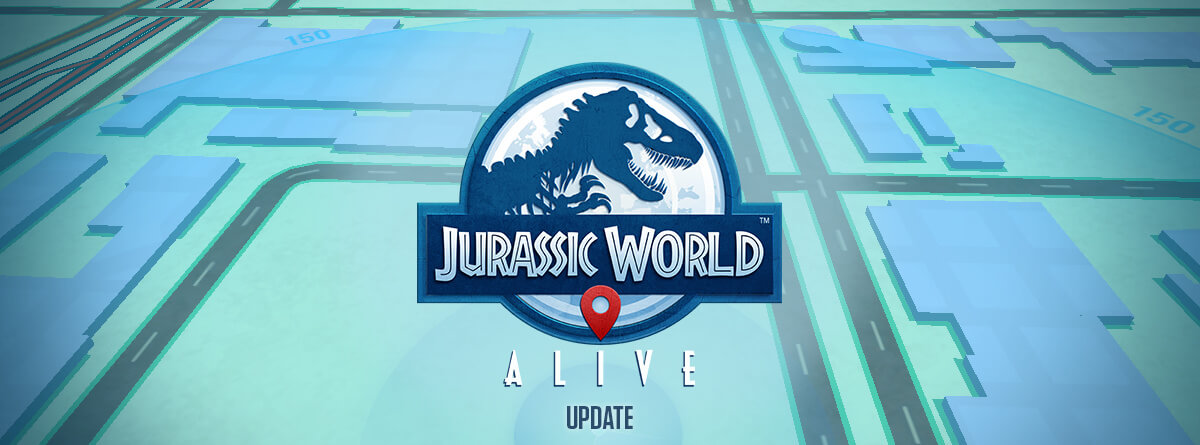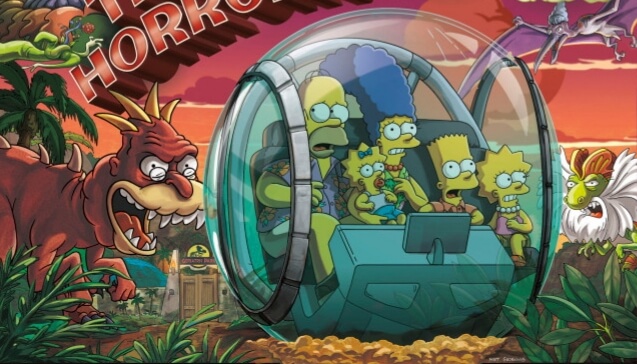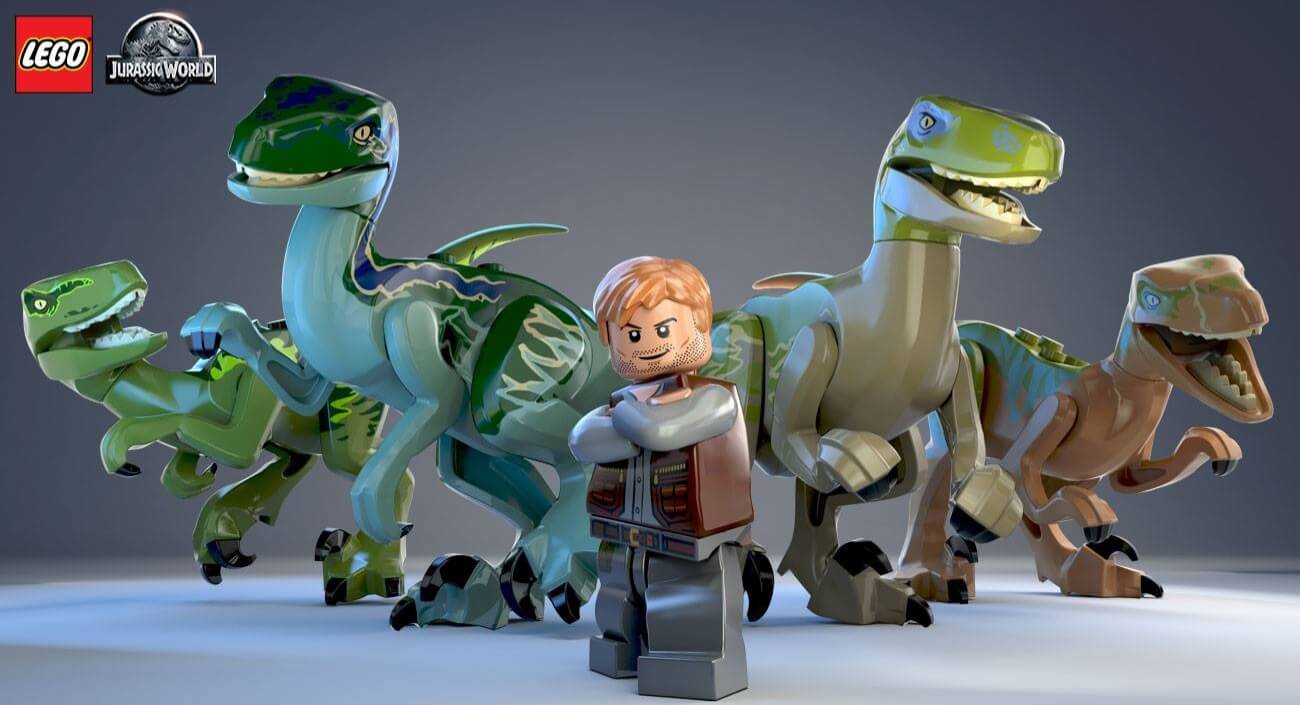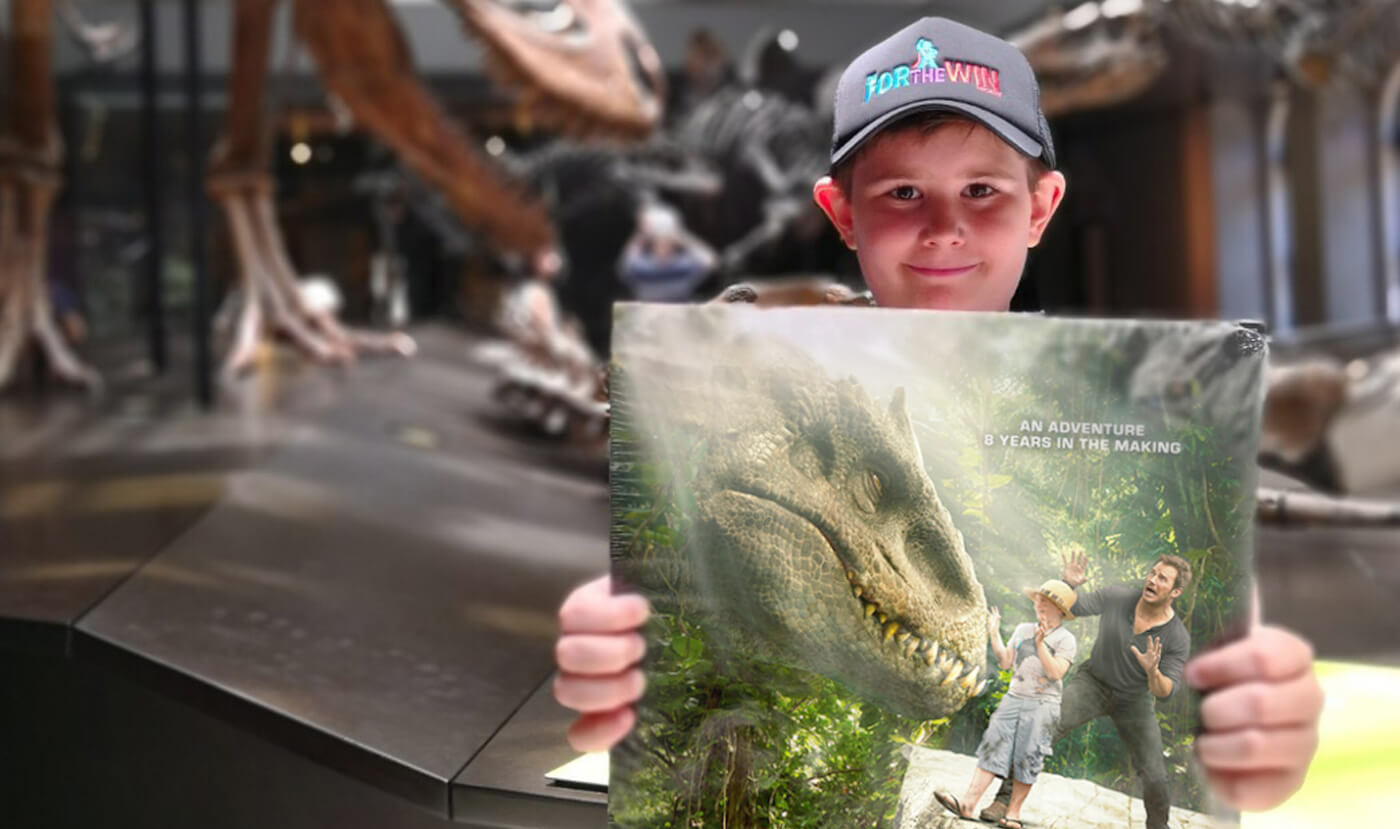The Jurassic Park franchise is home to numerous different dinosaurs species, existing both on screen or simply by name references. The following is a researched canonical guide to the dinosaurs confirmed to exist within the film universe, attempting to identify them by their various species and subspecies, while providing any additional supplementing information such as sex, or film appearance.
Some dinosaurs in the Jurassic franchise showcase prominent sexual dimorphism, creating a visual variation between the males and females of the same species. This guide indicates (m), (f), or (m/f) depending on the sex shown for the animal. If there is no evidence of variation, it is assumed both look the same and there will be no labeling of the animals sex.
Further, some dinosaurs look distinctly different from film to film. These are assumed to be different cloning variations creating distinct subspecies, and are indicated with v#’s once past their initial debut. Single version dinosaurs are not marked with a v# – the distinction is only marked from v#2 and beyond.
Of note, this list includes “prototype genome” dinosaurs. These are the taxidermy dinosaurs on display at Benjamin Lockwood’s estate as seen in Fallen Kingdom. Not much is known about these animals other than they were created in the early years of Jurassic Park, and likely were incomplete genetically, causing failed life cycles and continued research.
Finally, some dinosaurs are mentioned by name only, (such as being listed on park brochures or DNA vials). While some of these dinosaurs later appeared in other films, many did not. Dinosaurs without visual representation will utilize visual information such as toys in place of canonical designs. With that in mind, only dinosaur species mentioned in the films and direct film materials will be acknowledged, and this does not pull from species listed within viral or behind the scenes materials only.
To finalize information in this list, behind the scenes materials were referenced for existing on screen dinosaurs, as were interviews with the filmmakers discussing them. The troves of information available as well as treating the films as a field research assignment is what identified dinosaur sex, subspecies determination, and more.
This guide is only to provide basic information for identifying the species, and does not include the in depth animal profiles which will be available at a later time.
Velociraptor V.1 (m/f)

Carnivore – Dromaeosaur Seen in: Jurassic Park, The Lost World Status: Unknown Range: Isla Nublar and Sorna Females present in a semi-uniform color, males with more distinct tiger striping.
Velociraptor V.2 (m/f)

Carnivore – Dromaeosaur Seen in: Jurassic Park 3 Status: Unknown Known range: Isla Sorna Females are a more uniform beige and charcoal color with yellow eyes, red surrounding the socket, males darker with milky lateral stripes, quills on their head, red crests and eyes, and blue surrounding the eye
Velociraptor I.B.R.I.S. (V.1.5) (f)

Carnivore – Dromaeosaur Status: Survived by Blue only Range: Isla Nublar The ‘raptor squad’ raised by Owen Grady, these custom engineered raptors were designed to obey command. Blue, Charlie, Delta, Echo, and Subject V-2 are the only known examples of this subspecies. Learn more here.
Tyrannosaurus Rex (m/f)

Carnivore – Tyrannosaurid Status: At least one surviving female known (“Rexy/Roberta”) Range: Isla Nublar and Sorna Seen in: Jurassic Park, The Lost World, Jurassic Park 3, Jurassic World, Fallen Kingdom Females present in variations of brown coloration; males have more robust skulls and green colored skin.
Teratophoneus

Carnivore – Tyrannosaurid Status: Unknown Seen in: Fallen Kingdom (skeletons only) No known sexual dimorphism
Dilophosaurus

Compsognathus

Carnivore – Compsognathid Status: Survived Sibo eruption Known range: Isla Sorna and Nublar Seen in: The Lost World, Jurassic Park 3, Fallen Kingdom No known sexual dimorphism however subtle variation of color between individuals has been observed
Spinosaurus

Carnivore – Spinosaurid Status: Unknown/disputed Range: Isla Sorna Seen in: Jurassic Park 3 No known sexual dimorphism Note: it’s reported the skeleton on main street belongs to the one seen in JP3, however the skull structure is entirely different
Ceratosaurus

Carnivore – Ceratosaurid Status: Unknown/reported extinct Range: Isla Sorna Seen in: Jurassic Park 3 No known sexual dimorphism
Allosaurus

Carnivore – Allosaurid Status: Survived Sibo eruption Known range: Isla Nublar Seen in: Fallen Kingdom No known sexual dimorphism
Baryonyx

Carnivore – Spinosaurid Status: Survived Sibo Eruption Known range: Isla Nublar Seen in: Fallen Kingdom, mentioned to have existed prior by name only in Jurassic Park and JP3 No known sexual dimorphism
Suchomimus

Carnivore – Spinosaurid Status: Unknown Known range: Isla Nublar Seen in: Jurassic Park 3 and Jurassic World by name only No known sexual dimorphism
Carnotaurus

Carnivore – Abelisaurid Status: Survived Sibo Eruption Known Range: Isla Nublar Seen in: Fallen Kingdom No known sexual dimorphism
Metriacanthosaurus

Carnivore – Metriacanthosaurid Status: Unknown/reported extinct Known range: Isla Nublar Seen in: Jurassic Park & Jurassic World by name only No known sexual dimorphism
Herrerasaurus

Carnivore – Herrerasaurid Status: Unknown/reported extinct Known range: Isla Nublar Seen in: Jurassic Park by name only No known sexual dimorphism
Segisaurus

Carnivore – Coelophysid Status: Unknown/reported extinct Known range: Isla Nublar Seen in: Jurassic Park by name only No known sexual dimorphism
Proceratosaurus

Carnivore – Tyrannosaurid Status: Unknown Known range: Isla Nublar Seen in: Jurassic Park by name only No known sexual dimorphism
Dimorphodon

Carnivore – Pterosaur Status: Unknown Known range: Isla Nublar Seen in: Jurassic World No known sexual dimorphism
Pteranodon V.1 (“Geosternbergia”)

Omnivore/unknown – Pterosaur Status: Unknown Known range: Isla Sorna Seen in: The Lost World Note: Aviary mentioned in Jurassic Park with Pteranodons – potentially existed on Isla Nublar Sexual dimorphism disputed; possible Geosternbergia crest variation (only seen on early unused production materials and Roland Tembos dino guide). The animal seen in the film features a more typical Pteranodon crest which muddies the exact genus it belongs to or if the other flatter crest is canonical.
Pteranodon V.2 (m/f)

Carnivore – Pterosaur Status: Unknown Known range: Isla Sorna Seen in: Jurassic Park 3 Females are brown and tan, males are dark blue with yellow crests – males were designed but cut from film
Pterandon V.3

Carnivore – Pterosaur Status: Survived Sibo eruption Known range: Isla Nublar Seen in: Jurassic World, Fallen Kingdom Alternate crest color variants exist (norm being red), potential sexual dimorphism
Mosasaurus (f)

Carnivore – Mosasaur Status: Escaped Isla Nublar, alive Known range: Isla Nublar Seen in: Jurassic World, Fallen Kingdom No known sexual dimorphism, one animal only
Indominus Rex (hybrid) (f)

Carnivore – N/A Status: extinct Known range: Isla Nublar Seen in: Jurassic World, Fallen Kingdom (skeleton only) No known sexual dimorphism
Indoraptor (hybrid) (m)

Carnivore – N/A Status: extinct Known range: Lockwood Manor California Seen in: Fallen Kingdom No known sexual dimorphism
Concavenator (Prototype)

Carnivore – Allosaurid Status: Unknown/prototype genome Known range: Unknown Seen in: Fallen Kingdom (taxidermy display) No known sexual dimorphism, no known final genome
Mononykus (Prototype)

Carnivore – Maniraptora Status: Unknown/prototype genome Known range: Unknown Seen in: Fallen Kingdom (taxidermy display) No known sexual dimorphism, no known final genome Note: this is the only known true feathered Jurassic Park dinosaur
Dilophosaurus (Prototype)

Carnivore – Dilophosaurid Status: Unknown/prototype genome Known range: Unknown Seen in: Fallen Kingdom (taxidermy display) No known sexual dimorphism, led to at least one final genome
Velociraptor (Prototype)

Carnivore – Dromaeosaur Status: Unknown/prototype genome Known range: Unknown Seen in: Fallen Kingdom (taxidermy display) No known sexual dimorphism, led to at least three different final genomes Note: Appears to be direct decedent to V1 Raptors, share similarities to males minus stripes and skewing more orange
Dimetrodon (Prototype)

Carnivore – Synapsid Status: Unknown/prototype genome Known range: Unknown Seen in: Fallen Kingdom (taxidermy display) No known sexual dimorphism, no known final genome
Brachiosaurus V.1 (m/f)

Herbivore – Sauropod Status: Unknown Known range: Isla Nublar Seen in: Jurassic Park, Fallen Kingdom Subjects seen in Fallen Kingdom are smaller and stumpier, presenting subtle iridescent green skin around the face and neck. This is believed to be distinctive of male sexual dimorphism.
Brachiosaurus V.2 (m/f)

Herbivore – Sauropod Status: Unknown Known range: Isla Sorna Seen in: Jurassic Park 3 Males and females are both variations of green, but males present notable red patches of skin on their face and atop their skull
Mamenchisaurus

Herbivore – Sauropod Status: Unknown/reported extinct Known range: Isla Sorna Seen in: The Lost World No known sexual dimorphism
Apatosaurus

Herbivore – Sauropod Status: Survived Sibo eruption Known range: Isla Nublar Seen in: Jurassic World, Fallen Kingdom No known sexual dimorphism
Dreadnoughtus

Herbivore – Sauropod Status: Unknown Known range: Unknown Seen in: Fallen Kingdom (DNA vials only – sold to Russians) No known sexual dimorphism nor any evidence of living specimens
Gallimimus

Herbivore – Ornithomimosaur Status: Survived Sibo eruption Known range: Isla Nublar and Sorna Seen in: Jurassic Park, The Lost World, Jurassic World, Fallen Kingdom No known sexual dimorphism
Parasaurolophus (m/f)

Herbivore – Hadrosaur Status: Survived Sibo eruption Known range: Isla Nublar and Sorna Seen in: Jurassic Park, The Lost World, Jurassic Park 3, Jurassic World, Fallen Kingdom Males are light brown colors with lateral stripes; females feature similar patterns but green in coloration
Edmontosaurus

Herbivore – Hadrosaur Status: Unknown/reported extinct Known range: Isla Sorna & Nublar Seen in: The Lost World (skeleton only), Jurassic World (name only) No known sexual dimorphism
Corythosaurus

Herbivore – Hadrosaur Status: Unknown/reported extinct Known range: Isla Sorna Seen in: The Lost World (name only), Jurassic Park 3 No known sexual dimorphism
Triceratops (m/f)

Herbivore – Ceratopsian Status: Survived Sibo eruption Known range: Isla Nublar and Sorna Seen in: Jurassic Park, The Lost World, Jurassic Park 3, Jurassic World, Fallen Kingdom Females are a tortoiseshell coloration of greys and slight brown and have more prominent large rounded scutes and scales over their body; males are more solid greys and brown with subtle variations of blue on the face. Adult Triceratops presenting light vertical stripes on their back has been observed on Isla Sorna.
Sinoceratops

Herbivore – Ceratopsian Status: Survived Sibo eruption Known range: Isla Nublar Seen in: Fallen Kingdom No known sexual Dimorphism
Microceratus

Herbivore – Ceratopsian Status: Unknown Known range: Isla Nublar & Sorna Seen in: Jurassic World (name only) No known sexual dimorphism
Ankylosaurus (m/f)

Herbivore – Ankylosaur Status: Survived Sibo eruption Seen in: Jurassic Park 3, Jurassic World, Fallen Kingdom Males features red on face, darker armor, and distinct body shape; females are more uniform grey and brown colors
Peloroplites

Herbivore – Ankylosaur Status: Unknown/reported extinct Seen in: Fallen Kingdom (skeletons only) No known sexual dimorphism
Stegosaurus V.1

Herbivore – Stegosaurid Status: Unknown Known range: Isla Sorna, possibly Isla Nublar Seen in: The Lost World, Jurassic Park 3, mentioned in Jurassic Park by name only No known sexual dimorphism
Stegosaurus V.2

Herbivore – Stegosaurid Status: Survived Sibo erupton Known range: Isla Nublar Seen in: Jurassic World, Fallen Kingdom No known sexual dimorphism
Pachycephalosaurus

Herbivore – Pachycephalosaurid Status: unknown Known range: Isla Sorna and Nublar Seen in: The Lost World, Jurassic World No known sexual dimorphism
Stygimoloch

Herbivore – Pachycephalosaurid Status: Survived Sibo eruption Known range: Isla Nublar Seen in: Fallen Kingdom No known sexual dimorphism
Stegoceratops (hybrid)

Herbivore – N/A Status: disputed Known range: Isla Nublar/disputed Seen in: Jurassic World (computer display only – actual existence disputed) No known sexual dimorphism
Diplodocus (Protoype)

Herbivore – Sauropod Status: Unknown/prototype genome Known range: Unknown Seen in: Fallen Kingdom (taxidermy display) No known sexual dimorphism, no known final genome Note: specimens on display appear to be juveniles
Dracorex (prototype)

Herbivore – Pachycephalosaurid Status: Unknown/prototype genome Known range: Unknown Seen in: Fallen Kingdom (taxidermy display) No known sexual dimorphism, no known final genome Note: videogame design not indicative of film design

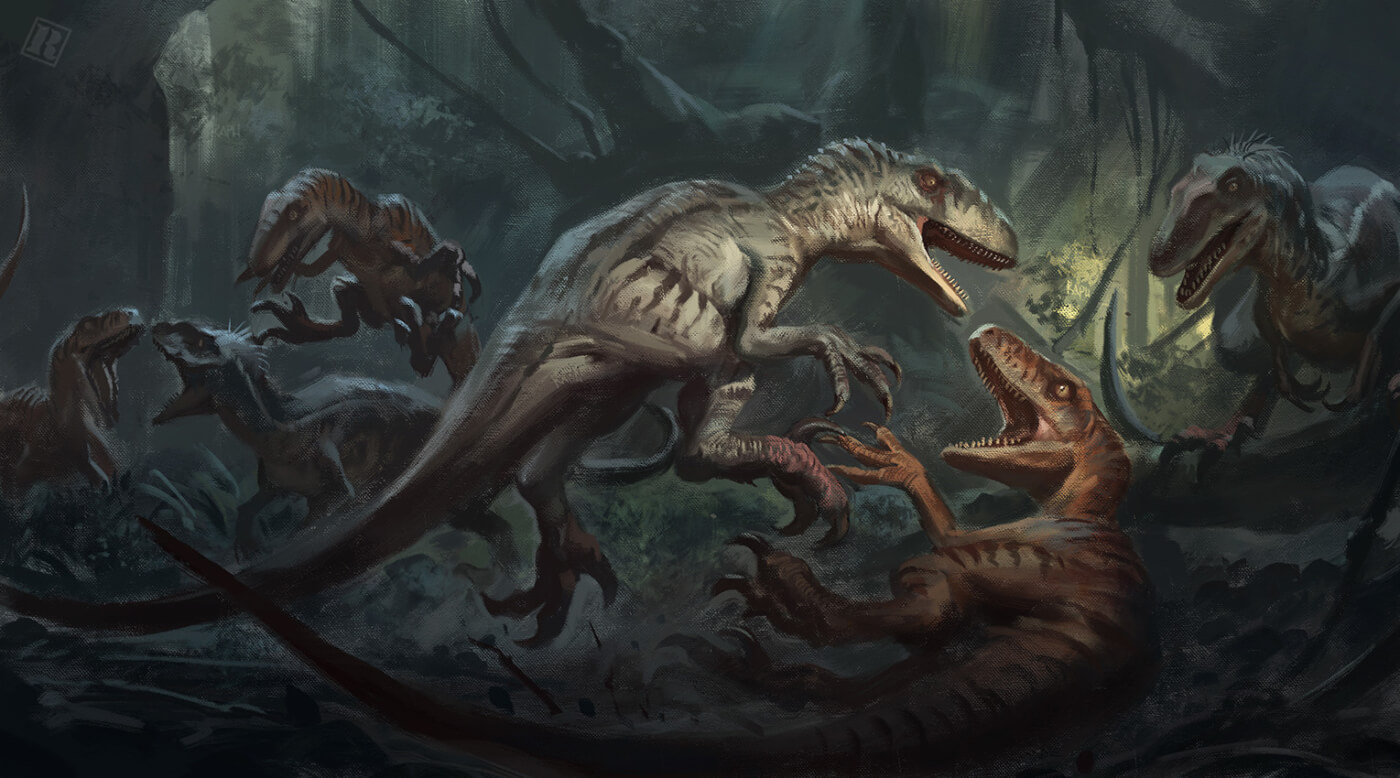

 All dinosaurs created for Jurassic Park by InGen were intended to be female, and as such these were the Velociraptor [initially] housed within Isla Nublar.
All dinosaurs created for Jurassic Park by InGen were intended to be female, and as such these were the Velociraptor [initially] housed within Isla Nublar. Natural born male V.1 raptors sport bright yellow eyes with skin more vibrant orange than their female counterparts, and a beige underbelly with less dark splotching overall. They’re easily distinguished from the female packmates as they are covered in vertical dark brown stripes, not entirely unlike that seen in Bengal Tigers.
Natural born male V.1 raptors sport bright yellow eyes with skin more vibrant orange than their female counterparts, and a beige underbelly with less dark splotching overall. They’re easily distinguished from the female packmates as they are covered in vertical dark brown stripes, not entirely unlike that seen in Bengal Tigers. The female V.2 raptors feature bright yellow eyes, with small round pupils. The eye socket is surrounded with a splash of vivid blood red skin, only seen elsewhere around their toes. Their skin is a semi-uniform cream color, with irregular charcoal brown covering its back from skull to tail, following the spine. From the spine there are occasional roughly defined vertical stripes, only slightly extending downward. From their ribs and hips below, small irregular horizontal striping occurs in blotchy patterns, also in the charcoal brown color.
The female V.2 raptors feature bright yellow eyes, with small round pupils. The eye socket is surrounded with a splash of vivid blood red skin, only seen elsewhere around their toes. Their skin is a semi-uniform cream color, with irregular charcoal brown covering its back from skull to tail, following the spine. From the spine there are occasional roughly defined vertical stripes, only slightly extending downward. From their ribs and hips below, small irregular horizontal striping occurs in blotchy patterns, also in the charcoal brown color. The male V.2 are immediately distinguished by their darker colors, horizontal milky stripe on either side running from skull to tail, striking red eyes with round pupils, and quill like proto-feathers protruding from the rear of their skull. Their skin is primarly a muted fleshy purple, molted with charcoal grey splotching of a similar tone. Their eye sockets are surrounded by vibrant blue skin, and the antorbital fenestra ridge highlighted by a brighter red color – this red can also be seen atop their skull, and around their fingers. Their underbelly is a yellow cream color that is occasionally interjected by the darker grey splotches.
The male V.2 are immediately distinguished by their darker colors, horizontal milky stripe on either side running from skull to tail, striking red eyes with round pupils, and quill like proto-feathers protruding from the rear of their skull. Their skin is primarly a muted fleshy purple, molted with charcoal grey splotching of a similar tone. Their eye sockets are surrounded by vibrant blue skin, and the antorbital fenestra ridge highlighted by a brighter red color – this red can also be seen atop their skull, and around their fingers. Their underbelly is a yellow cream color that is occasionally interjected by the darker grey splotches. Blue is a uniquely modified V.1.5 Velociraptor, infused with DNA from a Black-Throated African Monitor Lizard. She was bred as part of InGen’s Project I.B.R.I.S. and is the sole surviving member, following the Jurassic World incident in December 2015. Blue is the largest and stockiest raptor of the I.B.R.I.S. pack, easily identified by her scute covered face and striking blue stripe.
Blue is a uniquely modified V.1.5 Velociraptor, infused with DNA from a Black-Throated African Monitor Lizard. She was bred as part of InGen’s Project I.B.R.I.S. and is the sole surviving member, following the Jurassic World incident in December 2015. Blue is the largest and stockiest raptor of the I.B.R.I.S. pack, easily identified by her scute covered face and striking blue stripe. Charlie is a uniquely modified V.1.5 Velociraptor, infused with DNA from a Green Iguana. She was bred as part of InGen’s Project I.B.R.I.S. and was the first ‘Raptor Squad’ casualty during the Jurassic World incident in December 2015.
Charlie is a uniquely modified V.1.5 Velociraptor, infused with DNA from a Green Iguana. She was bred as part of InGen’s Project I.B.R.I.S. and was the first ‘Raptor Squad’ casualty during the Jurassic World incident in December 2015. Delta is a uniquely modified V.1.5 Velociraptor, infused with the most Avian DNA out of the pack. She was bred as part of InGen’s Project I.B.R.I.S. and was the second ‘Raptor Squad’ casualty during the Jurassic World incident in December 2015.
Delta is a uniquely modified V.1.5 Velociraptor, infused with the most Avian DNA out of the pack. She was bred as part of InGen’s Project I.B.R.I.S. and was the second ‘Raptor Squad’ casualty during the Jurassic World incident in December 2015. Echo was a V.1.5 Velociraptor who’s unique DNA attributes were not cataloged. She was bred as part of InGen’s Project I.B.R.I.S. and was the final ‘Raptor Squad’ casualty during the Jurassic World incident in December 2015.
Echo was a V.1.5 Velociraptor who’s unique DNA attributes were not cataloged. She was bred as part of InGen’s Project I.B.R.I.S. and was the final ‘Raptor Squad’ casualty during the Jurassic World incident in December 2015.





